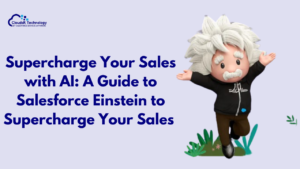How Enterprise Application Integration Enhances Business Agility and Efficiency

Companies rely on a mix of software applications to handle everything from customer interactions to inventory management. But here’s the catch: when these systems don’t communicate well with each other, things can get messy fast.
That’s where Enterprise Application Integration (EAI) comes into play. Simply put, EAI connects all these disparate systems so they can work together seamlessly. Let’s dive into how this integration can make your business more agile and efficient.
1. Streamlining Business Processes
Imagine running a business where your CRM, ERP, and supply chain systems each operate in their own little bubble. Sounds inefficient, right? That’s often the reality for many companies, and it can lead to data bottlenecks and slow workflows. EAI helps to break down these silos by ensuring that all your systems can talk to each other.
For instance, let’s say a customer places an order. Without integration, you’d have to manually enter that data into your inventory, billing, and shipping systems. But with EAI, this process can be automated. The CRM captures the order and immediately communicates with the ERP to update inventory levels and initiate the billing process. This kind of seamless data flow means fewer errors, faster processes, and, ultimately, a more efficient operation.
2. Enhancing Real-Time Data Access and Decision-Making
In a world driven by data, having real-time access to accurate information is a game-changer. With EAI, data from various sources—whether it’s sales, inventory, or customer service—is consolidated into one place, giving you a 360-degree view of your business.
Think about it this way: without integration, you might be making decisions based on yesterday’s numbers. But with EAI, you can get up-to-the-minute insights. This means you can quickly spot trends, address issues, and make well-informed decisions that can adapt to changing market conditions. Essentially, you’re not just reacting to what happened; you’re preparing for what’s coming next.
3. Improving Customer Experience
Let’s face it: today’s customers expect a seamless experience. But when customer data is scattered across different systems like CRM, support, and billing, it’s hard to deliver that experience. EAI helps by unifying all this data into one accessible source.
For example, if a customer contacts your support team, having integrated systems means the representative can instantly see the customer’s order history, previous interactions, and even billing information—all without jumping between different software. This not only speeds up the resolution time but also makes the customer feel valued and understood. Happy customers are loyal customers, and that can make a big difference in your bottom line.
4. Reducing Operational Costs
Here’s a simple truth: running separate, non-integrated systems can be costly. You’re dealing with duplicate data entry, manual processes, and potential errors that can all add up to wasted time and money. EAI can help cut these operational costs significantly.
By automating data flow between systems, you reduce the need for manual input and the risk of errors. For example, integrating your CRM and ERP systems can automate data syncing, freeing up your staff to focus on more strategic tasks rather than repetitive data entry. Plus, by making better use of your existing IT infrastructure, you avoid the need for costly system replacements.
5. Facilitating Business Agility
The business world is constantly changing. New opportunities arise, market demands shift, and technology evolves. To stay ahead, your business needs to be agile. EAI provides the flexibility required to adapt to these changes quickly.
For instance, if you decide to roll out a new e-commerce platform, EAI allows you to integrate it with your existing systems—like CRM, inventory management, and payment gateways—without causing major disruptions. This level of flexibility means you can act quickly on new business opportunities, whether it’s launching a new product line or expanding into a new market.
6. Enhancing Collaboration Across Departments
Ever notice how different departments within a company sometimes feel like they’re speaking different languages? The marketing team is using one set of data, the sales team another, and finance yet another. EAI breaks down these walls by enabling seamless data sharing across the organization.
When marketing, sales, and finance are all working from the same, up-to-date information, they can collaborate more effectively. For example, marketing can run more targeted campaigns based on real-time sales data, while finance can immediately see the revenue impact. This level of collaboration not only aligns strategies across departments but also drives better business outcomes.
7. Enhancing Security and Compliance
Data security and compliance are top priorities, especially when dealing with sensitive information. Managing this across multiple systems can be tricky. EAI helps by centralizing data management, making it easier to implement consistent security measures and compliance protocols.
Take single sign-on (SSO) as an example. With EAI, employees can securely access multiple systems using one set of login credentials, reducing the risk of unauthorized access. Plus, when it comes to compliance, integrated systems can automatically perform compliance checks and maintain audit trails, simplifying the whole process.
8. Improving Scalability
As your business grows, so does your need for more robust IT solutions. Scaling isolated systems can be not only complex but also expensive. EAI offers a more scalable architecture that can grow with your business.
Need to integrate a new application or add more data storage? EAI makes it relatively simple to do so without disrupting your existing operations. This ability to scale quickly and efficiently supports your business’s growth, allowing you to handle increased transactions, data, and user loads with ease.
Wrapping It Up
In today’s business environment, agility and efficiency are crucial, and enterprise application integration is a powerful way to achieve both. By streamlining business processes, offering real-time insights, improving customer experiences, and reducing operational costs, EAI enables businesses to operate smoothly and respond quickly to changes in the market.
But it doesn’t stop there. EAI also enhances collaboration, boosts security and compliance, and provides a scalable IT infrastructure—all key ingredients for sustainable growth. In short, if you’re looking to make your business more agile and efficient, integrating your enterprise applications is a smart move.






